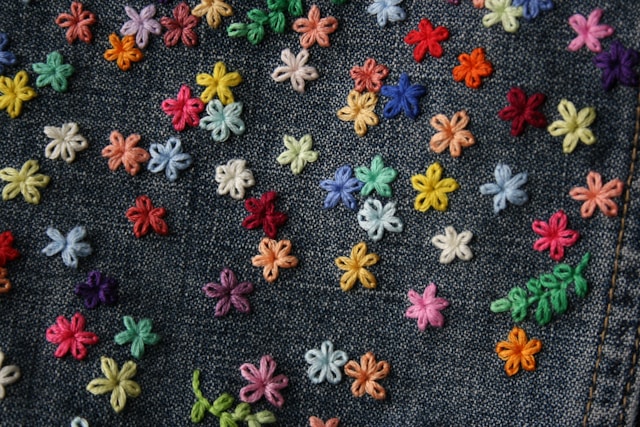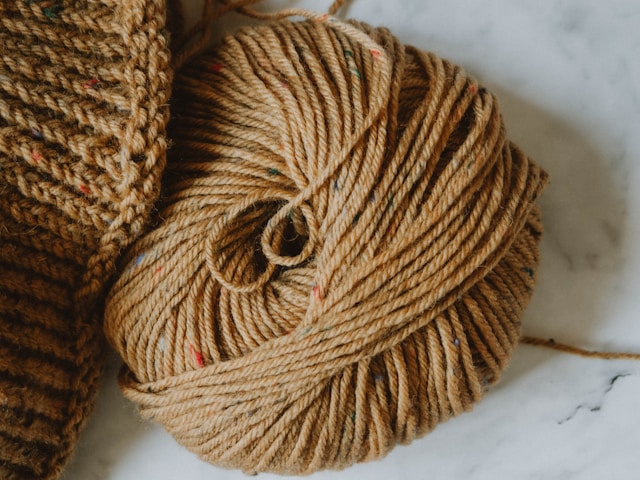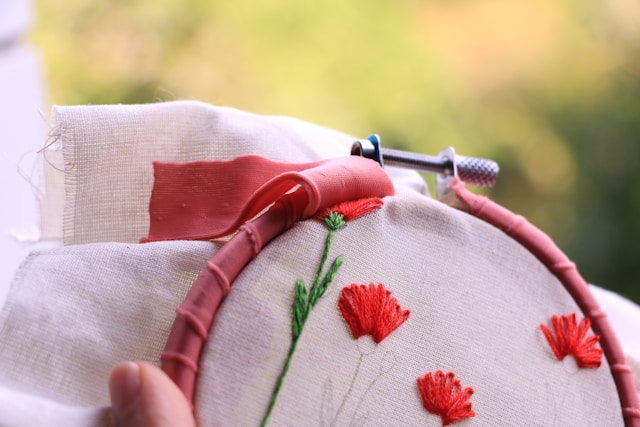Crafting isn’t just about making things—it’s about the experience of creating. Whether you knit, quilt, embroider, or crochet, the way you approach your craft can shape your connection to it. Developing creative rituals around your fiber arts practice can turn it into a form of mindfulness, self-expression, or even personal transformation.
A ritual doesn’t have to be elaborate or spiritual—it’s simply a repeated action that carries meaning. Adding small, intentional moments to your craft practice can help you feel more connected, inspired, and fulfilled every time you pick up your materials.
10 Creative Rituals to Make Your Crafting More Meaningful
Here are ten creative rituals that will help you infuse your crafting practice with more depth, intention, and personal meaning.

1. Set an Intention Before You Begin
Before you pick up your yarn, thread, or fabric, pause and reflect on why you’re crafting today. Are you stitching for relaxation? To process an emotion? To create something for a loved one?
Setting an intention helps shift crafting from a mindless habit to an intentional experience. You can write your intention in a journal, say it out loud, or simply hold it in your mind as you begin.
2. Choose Colors That Reflect Your Mood or Energy
The colors we use in our craft hold meaning—sometimes subconsciously. Choosing colors based on how you feel (or how you want to feel) can help you infuse your work with emotion, energy, and personal expression.
- Soft blues and greens → Calm, relaxation, healing
- Warm reds and oranges → Energy, passion, motivation
- Earthy tones → Grounding, stability, connection to nature
- Pastels → Playfulness, lightness, joy
Try selecting your materials based on intuition rather than a pre-planned design, allowing color to guide your creative process.
3. Light a Candle or Use a Special Object to Mark the Start
Just like tea ceremonies or meditation practices have starting rituals, you can create a small moment to mark the beginning of your crafting session.
✔ Light a candle with a scent that helps you focus or relax.
✔ Ring a small bell, chime, or tuning fork to signal that it’s time to create.
✔ Place a special stone, token, or object near your workspace to hold your creative energy.
This simple act tells your brain: “It’s time to make.”
4. Use a Handmade Journal to Track Your Creative Journey
A dedicated crafting journal can help you capture thoughts, reflections, and progress over time.
What to include in a craft journal:
- Sketches of ideas or embroidery patterns
- Notes on techniques you’re exploring
- Reflections on what crafting has brought into your life
- Swatches of fabric, yarn samples, or color palettes
This turns crafting into a living, evolving process, where every project becomes part of a larger creative story.

5. Incorporate Breathwork or Meditation Before You Start
If you often feel restless, distracted, or mentally cluttered before you craft, try grounding yourself with breathwork before beginning.
Simple breathwork for creativity:
- Box breathing: Inhale for 4 seconds, hold for 4, exhale for 4, hold for 4. Repeat three times.
- Soft focus meditation: Sit with your materials and simply observe them without touching them. Take in the colors, textures, and possibilities before you begin.
- Sensory reset: Run your fingers through fabric, squeeze a ball of yarn, or listen to the soft sounds of your materials moving.
This helps you transition into your craft with a more focused and relaxed mind.
6. Craft in Silence (or With Carefully Chosen Sound)
Many people listen to podcasts or watch TV while crafting, but experimenting with silence or intentional sound can deepen the experience.
Try:
- Crafting in total silence, noticing the sounds of the thread, needles, or fabric moving.
- Playing instrumental or ambient music to create a meditative atmosphere.
- Using binaural beats or nature sounds to encourage relaxation and creativity.
Silence allows you to fully engage with the textures, rhythms, and process of making.
7. Designate a Special Place for Crafting
Where you craft influences how it feels. Even if you don’t have a dedicated studio or craft room, you can create a small ritual around your creative space.
- Lay out a fabric or scarf that marks your crafting area.
- Keep a small “inspiration box” nearby with items that bring you joy (buttons, thread, nature objects, poetry).
- Use a specific chair, table, or lamp only for crafting.
This physical separation signals to your brain that you’re stepping into a creative zone.
8. Stitch a Word or Phrase Into Your Work
Hidden messages have been stitched into textiles for centuries—from secret symbols in medieval tapestries to protest embroidery. Adding words, initials, or small symbols can bring personal significance to your pieces.
Ideas for stitched messages:
- A word of intention (peace, hope, courage)
- A loved one’s initials or a personal mantra
- A small embroidered symbol representing something meaningful to you
This tiny ritual transforms crafting into a personal storytelling practice.

9. Close Your Crafting Session With Gratitude
End your session by expressing gratitude for the process, not just the result. Even if you made mistakes or didn’t finish a project, take a moment to appreciate the time spent creating.
Try this simple practice:
- Hold your work in your hands and reflect on what the process gave you today—peace, joy, a moment of stillness?
- Say a quiet “thank you” to your materials for their role in the creative process.
- Acknowledge that not every project needs to be finished to be valuable.
Gratitude shifts the focus from output to experience, reinforcing why you craft in the first place.
10. Try the “Slow Stitch Meditation” Exercise
If you want to experience a ritualized approach to crafting, try this simple Slow Stitch Meditation Exercise:
- Choose a piece of fabric or thread that “calls” to you—don’t overthink it.
- Take three deep breaths before you make your first stitch.
- With each stitch, repeat a word in your mind (peace, release, calm, love—whatever resonates).
- Work slowly, without rushing, focusing only on the movement of the needle and thread.
- End with a moment of stillness, placing your hand over your work and breathing in appreciation.
Even five minutes of this practice can shift your energy, reduce stress, and bring deeper intention to your craft.
Next Steps: Bringing Ritual Into Your Craft Practice
✔ Choose one ritual from this list to experiment with in your next crafting session.
✔ Observe how it changes your experience. Does it help you feel more connected, calm, or inspired?
✔ Refine your own unique rituals. What feels natural and meaningful to you?
If you’re looking for ways to make your creative practice more intentional and healing, the Craft to Heal year-long workshop series explores different ways to use fiber arts as a tool for mindfulness, self-expression, and well-being.
🧶 Want to learn more? Click here to join Craft to Heal.
